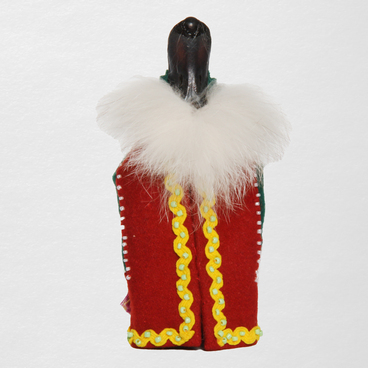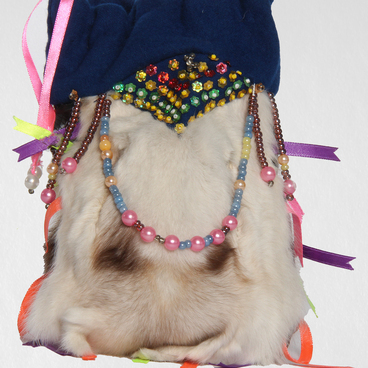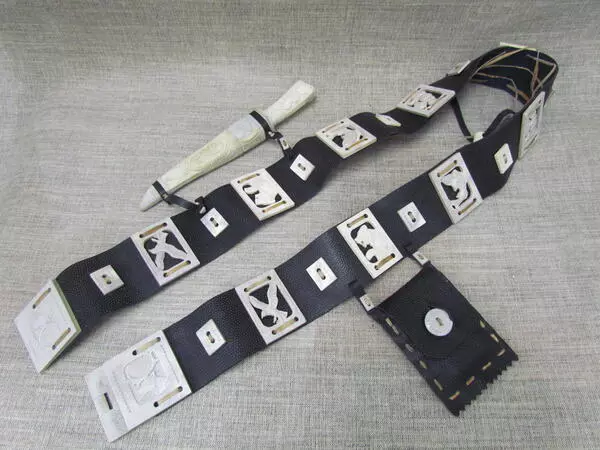When a child was born in a family of northern Khanty, at first he slept in a small crib made of old birch bark on a reindeer skin mat. Then the baby received two cribs at once — a day and a night one.
The day crib was more durable; it was often made of wood and was necessarily had a backrest and a wooden arch. The night crib was made of birch bark — the baby did not play in it, but only slept.
The night crib was a simple birch bark box with rounded corners and ties. With their help, the child was laced up for the night, and he, tossing and turning, could not fall out of the crib. In frosty weather, a fur cover was put on the crib, covered with a fabric for durability and warmth.
Often a two-layer birch bark liner was put on a baby’s crib. It was believed that such a plate holds the baby’s legs in the correct position, which means they will be straight. In addition, birch bark protected the blanket from getting wet.
The night crib from the Muravlenko museum is ovoid and slightly stretched to one edge. It has low sides, which are fastened together for durability along the upper and lower edges with hoops made of thin branches. They are sewn to the birch bark base with thin strips of deerskin. On the outer side of the sides, there are spacers made of flexible branches that keep the shape of the crib.
Four round holes in the sides of the crib are located opposite each other, through them a reindeer skin rope is threaded. It wraps around the bottom and rises 40 centimeters above the bed from four sides. At the top, the rope is fixed to a metal ring so that the structure can be easily suspended.
The sides of the cradle are decorated with traditional patterns, carefully scratched into the birch bark with the blunt side of a knife. In the old days, guard zigzags, straight and oblique crosses served as patterns for cribs. They also often depicted a wood grouse hen — the guardian of sleep, which, according to Khanty beliefs, accompanied a person from birth to death and made sure that his soul rested at night.
The day crib was more durable; it was often made of wood and was necessarily had a backrest and a wooden arch. The night crib was made of birch bark — the baby did not play in it, but only slept.
The night crib was a simple birch bark box with rounded corners and ties. With their help, the child was laced up for the night, and he, tossing and turning, could not fall out of the crib. In frosty weather, a fur cover was put on the crib, covered with a fabric for durability and warmth.
Often a two-layer birch bark liner was put on a baby’s crib. It was believed that such a plate holds the baby’s legs in the correct position, which means they will be straight. In addition, birch bark protected the blanket from getting wet.
The night crib from the Muravlenko museum is ovoid and slightly stretched to one edge. It has low sides, which are fastened together for durability along the upper and lower edges with hoops made of thin branches. They are sewn to the birch bark base with thin strips of deerskin. On the outer side of the sides, there are spacers made of flexible branches that keep the shape of the crib.
Four round holes in the sides of the crib are located opposite each other, through them a reindeer skin rope is threaded. It wraps around the bottom and rises 40 centimeters above the bed from four sides. At the top, the rope is fixed to a metal ring so that the structure can be easily suspended.
The sides of the cradle are decorated with traditional patterns, carefully scratched into the birch bark with the blunt side of a knife. In the old days, guard zigzags, straight and oblique crosses served as patterns for cribs. They also often depicted a wood grouse hen — the guardian of sleep, which, according to Khanty beliefs, accompanied a person from birth to death and made sure that his soul rested at night.






